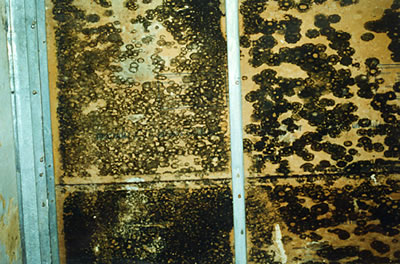October 3, 2005
Mold: The Gift That Keeps On Giving
By Michael D. Shaw
As Hurricane Katrina becomes a bad memory, an old problem is returning to the headlines—even if this nemesis never really left New Orleans and the Gulf Coast. I’m referring to toxic mold, the subject of one of my earliest articles in Health News Digest.
In that column, we looked at the dangerous mycotoxins produced by molds, and concluded that overblown hype of the plaintiff’s attorneys notwithstanding, when mold and humans get close together, especially if those humans are very young, elderly, or immunocompromised, there can be serious problems. In the aftermath of Katrina, extensive flooding, combined with weeks of inaction, mean one thing: Many homes are not now, and perhaps will never be, habitable.
It is virtually impossible to eradicate all the mold spores now present in these homes, nor is it economically wise to do so. Instead, homeowners and policy activists need to acknowledge both the medical and financial costs of this real, if periodically invisible, menace. Of course, the mold worries are in addition to concerns over structural damage, contaminated water, and utility issues.
As always, the baddest bad boy of the molds in question is our old friend Stachybotrys chartarum. According to Nicholas Money, a mold expert from Miami University in Oxford, Ohio: “This organism produces a greater variety of toxins and in greater concentrations than any other mold that’s been studied.”
It turns out that even dead mold can provoke asthma in sensitive individuals, and all public places, including libraries, shopping centers, schools, restaurants, and businesses, should take appropriate measures to guard against this increased problem. Nowhere is this admonition more imperative than among hospitals in New Orleans. “It might be difficult or impossible to reopen some of these medical centers,” said Joe Cappiello, an official with the Joint Commission on Accreditation of Healthcare Organizations.
And what about all those residences that are now overrun with mold? Sadly, many of these homes must be razed, since eradicating the mold is both a waste of time and money. A good rule of thumb in these situations is depth—literally!
In the words of Jeffrey May, a building inspector, chemist and Boston-based author: “Anything that’s been submerged probably will be a tear-down.” This is surely unfortunate news for homeowners throughout the Gulf region. Yet, Mr. May’s advice is nonetheless entirely sound. There is no sense in endangering families by encouraging individuals—including children, the elderly and the sick—to return to these severely damaged homes and apartment buildings.
Less serious cases may respond to normal mold remediation techniques, followed up with an inspection comparing spore levels inside and outside of the facility. Prudence should be our guide in these circumstances. Toxic mold blooms coming after this disaster need not be a cause for paranoia, but are a reason for judicious planning, instead.
Hurricane Katrina reminds us that few are immune to the costly and powerful effects of this fungus among us. But, as we repair New Orleans and the Gulf Coast, there is no better time to reeducate the public about the myths and truths surrounding toxic mold, and strike a blow against the junk science-fueled doom profiteers.

